Ovde se mogu pronaći najčešće korišćene mrežne skraćenice. Da biste se bliže upoznali sa svakom, potrebno je otići na wiki ili neku drugu stranicu sa detaljnim objašnjenjem.
Skraćenice su preuzete sa sajta cisco.com
| Skraćenica: | Opis: | |
| 1 | AAA | authentication, authorization, and accounting. |
| 2 | ACE | Access Control Entry. |
| 3 | ACK | acknowledgement notification. |
| 4 | ACL | access control list. |
| 5 | AH | Authentication Header. |
| 6 | ARP | Address Resolution Protocol—A low-level TCP/IP protocol that maps a node’s hardware address (called a „MAC“ address) to its IP address. Defined in RFC 826. An example hardware address is 00:00:a6:00:01:ba. (The first three groups specify the manufacturer, the rest identify the host’s motherboard.) |
| 7 | ASA | Adaptive Security Algorithm. |
| 8 | ASBR | Autonomous System Boundary Router. |
| 9 | ASCII | American Standard Code for Information Interchange. |
| 10 | BER | bit error rate. |
| 11 | BIND | Berkeley Internet Name Domain. |
| 12 | BGP | Border Gateway Protocol—While the Firewall Services Module (FWSM) does not support use of this protocol, you can set the routers on either side of the FWSM to use RIP between them and then run BGP on the rest of the network before the routers. |
| 13 | BOOTP | Bootstrap Protocol—Lets diskless workstations boot over the network and is described in RFC 951 and RFC 1542. |
| 14 | BPDU | bridge protocol data unit. |
| 15 | BSD | Berkeley Standard Distribution. |
| 16 | CA | certification authority. |
| 17 | CDP | Cisco Discovery Protocol. |
| 18 | CGI | Common Gateway Interface. |
| 19 | chargen | Character Generation—Via TCP, a service that sends a continual stream of characters until stopped by the client. Via UDP, the server sends a random number of characters each time the client sends a datagram. Defined in RFC 864. |
| 20 | CLI | command-line interface. |
| 21 | conn | Connection slot in the FWSM—Refer to the xlate command page in the Catalyst 6500 Series Switch and Cisco 7600 Series Router Firewall Services Module Command Reference for more information. |
| 22 | CoS | Class of Service. |
| 23 | CPU | Central Processing Unit. |
| 24 | CR | carriage return. |
| 25 | CTIQBE | Computer Telephony Interface Quick Buffer Encoding. |
| 26 | DES | Data Encryption Standard. |
| 27 | DHCP | Dynamic Host Configuration Protocol. |
| 28 | DMZ | demilitarized zone—A separate network behind the firewall that allows limited access to outside users. |
| 29 | DNAT | Dynamic Network Address Translation. |
| 30 | DNS | Domain Name System—Operates over UDP unless zone file access over TCP is required. |
| 31 | DNS | Domain Name System (or Service). |
| 32 | DoS | Denial of service. |
| 33 | EIGRP | Enhanced Interior Gateway Routing Protocol—While the FWSM does not support use of this protocol, you can set the routers on either side of the FWSM to use RIP between them and then run EIGRP on the rest of the network before the routers. |
| 34 | EOBC | Ethernet Out-of-Band Channel. |
| 35 | ESP | Encapsulating Security Payload. Refer to RFC 1827 for more information. |
| 36 | EXEC | privileged command mode, which displays the „#“ prompt. |
| 37 | Firewall MC | Firewall Management Center. |
| 38 | FTP | File Transfer Protocol. |
| 39 | FWSM | Firewall Services Module. |
| 40 | Gbps | Gigabit bytes per second. |
| 41 | GRE | Generic Routing Encapsulation—A tunneling protocol that does not use encryption. |
| 42 | H.323 | A collection of protocols that allow the transmission of voice data over TCP/IP networks. |
| 43 | HTTP | HyperText Transfer Protocol—The service that handles access to the World Wide Web. |
| 44 | HTTPS | HTTP over SSL. |
| 45 | IANA | Internet Assigned Number Authority—Assigns all port and protocol numbers for use on the Internet. You can view port numbers at the following site: |
| 46 | ||
| 47 | https://iana.org/assignments/port-numbers | |
| 48 | ||
| 49 | You can view protocol numbers at the following site: | |
| 50 | ||
| 51 | https://iana.org/assignments/protocol-numbers | |
| 52 | ICMP | Internet Control Message Protocol—This protocol is commonly used with the ping command. You can view ICMP traces through the FWSM with the debug trace on command. Refer to RFC 792 for more information. |
| 53 | IETF | Internet Engineering Task Force. |
| 54 | IGMP | Internet Group Management Protocol. |
| 55 | IGRP | Interior Gateway Routing Protocol. |
| 56 | IKE | Internet Key Exchange. |
| 57 | ILS | Internet Locator Service. |
| 58 | IOS | Internetwork Operating System. |
| 59 | IP | Internet Protocol. |
| 60 | IPinIP | IP-in-IP encapsulation protocol. |
| 61 | IPSec | IP Security Protocol efforts in the IETF (Internet Engineering Task Force). |
| 62 | IPX | Internetwork Packet Exchange. |
| 63 | IRC | Internet Relay Chat protocol—The protocol that lets users access chat rooms. |
| 64 | ISAKMP | Internet Security Association and Key Management Protocol. |
| 65 | ISC | IP Solution Center. |
| 66 | ISN | Initial Sequence Number. |
| 67 | ISP | Internet service provider. |
| 68 | ITU | International Telecommunication Union. |
| 69 | LDAP | Lightweight Directory Access Protocol. |
| 70 | LF | linefeed. |
| 71 | LSA | link-state advertisement. |
| 72 | MAC | Media Access Control. |
| 73 | MD5 | Message Digest 5—An encryption standard for encrypting VPN packets. This same encryption is used with theaaa authentication console command to encrypt Telnet sessions to the console. |
| 74 | MGCP | Media Gateway Control Protocol. |
| 75 | MIB | Management Information Base—Used with SNMP. |
| 76 | MPLS | Multiprotocol Label Switching. |
| 77 | Mpps | Million packets per second. |
| 78 | MSFC | Multilayer Switch Feature Card. |
| 79 | MTU | maximum transmission unit—The maximum number of bytes in a packet that can flow efficiently across the network with best response time. For Ethernet, the default MTU is 1500 bytes, but each network can have different values, with serial connections having the smallest values. The MTU is described in RFC 1191. |
| 80 | NAT | Network Address Translation. |
| 81 | NetBIOS | Network Basic Input Output System—An application programming interface (API) that provides special functions for PCs in local-area networks (LANs). |
| 82 | NFS | Network File System. |
| 83 | NIC | Network Information Center. |
| 84 | NIS | Network Information Service. |
| 85 | NMS | network management station. |
| 86 | NNTP | Network News Transfer Protocol—News reader service. |
| 87 | NOS | Network Operating System. |
| 88 | NP | Network Processor—as in IBM NP or Intel NP. |
| 89 | NSSA | not so stubby area. |
| 90 | NTP | Network Time Protocol—Set system clocks via the network. |
| 91 | OSPF | Open Shortest Path First. |
| 92 | PAT | Port Address Translation. |
| 93 | PBX | private branch exchange. |
| 94 | PDM | PDM for FWSM. |
| 95 | PDU | protocol data unit. |
| 96 | PIM | Protocol Independent Multicast. |
| 97 | PIX | Private Internet Exchange. |
| 98 | POP | Post Office Protocol. |
| 99 | PPP | Point-to-Point Protocol. Provides FWSM-to-router and host-to-network connections over synchronous and asynchronous circuits. |
| 100 | PPPoE | Point-to-Point Protocol over Ethernet. |
| 101 | PPTP | Point-to-Point Tunneling Protocol. RFC 2637 describes the PPTP protocol. |
| 102 | RADIUS | Remote Authentication Dial-In User Service—User authentication server specified with the aaa-server command. |
| 103 | RAS | The registration, admission, and status protocol. Provided with H.323 support. |
| 104 | RDT | Real Data Transport |
| 105 | RFC | Request For Comment—RFCs are the defacto standards of networking protocols. |
| 106 | RIP | Routing Information Protocol. |
| 107 | RPC | Remote Procedure Call. |
| 108 | RSA | Rivest, Shamir, and Adelman. RSA is the trade name for RSA Data Security, Inc. |
| 109 | RSH | Remote Shell—as in Remote Shell protocol. |
| 110 | RTCP | RTP Control Protocol. |
| 111 | RTP | Real-Time Transport Protocol. |
| 112 | RTSP | Real Time Streaming Protocol. |
| 113 | SA | security association. |
| 114 | SCCP | Simple (Skinny) Client Control Protocol. |
| 115 | SCCP | Skinny (or Simple) Client Control Protocol is a simplified protocol used in VoIP networks. |
| 116 | SDP | Session Description Protocol. |
| 117 | SIP | Session Initiation Protocol. |
| 118 | SMTP | Simple Mail Transfer Protocol—Mail service. The fixup protocol smtp command enables the Mail Guard feature. The Mail Guard feature is compliant with both the RFC 1651 EHLO and RFC 821 section 4.5.1 commands. |
| 119 | SNMP | Simple Network Management Protocol—Set attributes with the snmp-server command. |
| 120 | SPC | Shared Profile Component. |
| 121 | SPF | shortest path first. |
| 122 | SPI | Security Parameter Index—A number which, together with a destination IP address and security protocol, uniquely identifies a particular security association. |
| 123 | SQL*Net | SQL*Net is a protocol Oracle uses to communicate between client and server processes. (SQL stands for Structured Query Language.) |
| 124 | SSH | Secure Shell. |
| 125 | SSH | Secure Shell. |
| 126 | STDERR | standard error file descriptor. |
| 127 | SVI | switched virtual interface. |
| 128 | SYN | Synchronize sequence numbers flag in the TCP header. |
| 129 | SYN | TCP synchronization, used as part of three-way handshake to establish a TCP session. |
| 130 | TACACS+ | Terminal Access Controller Access Control System Plus. |
| 131 | TCP | Transmission Control Protocol. Refer to RFC 793 for more information. |
| 132 | TFTP | Trivial File Transfer Protocol. |
| 133 | TNSFrame | Transparent Network Substrate Frame.? |
| 134 | TPKT | Transport Packet. |
| 135 | Triple DES | Triple Data Encryption Standard. Also known as 3DES. |
| 136 | uauth | User authentication. |
| 137 | UDP | User Datagram Protocol. |
| 138 | URL | Universal Resource Locator. |
| 139 | UUIE | user-user information element. |
| 140 | VLAN | virtual LAN. |
| 141 | VoIP | Voice over IP. |
| 142 | VPN | Virtual Private Network. |
| 143 | WAN | wide-area network. |
| 144 | WINS | Windows Internet Naming Service. |
| 145 | WWW | World Wide Web. |
| 146 | XDMCP | X Display Manager Control Protocol. |
 Umrežen Blog Blog o umrežavanju i internetu. Tutorijali, SpeedTest, Merenje Brzine interneta, Telekom ADSL, Telenor, VIP, Sbb, Orion.
Umrežen Blog Blog o umrežavanju i internetu. Tutorijali, SpeedTest, Merenje Brzine interneta, Telekom ADSL, Telenor, VIP, Sbb, Orion.

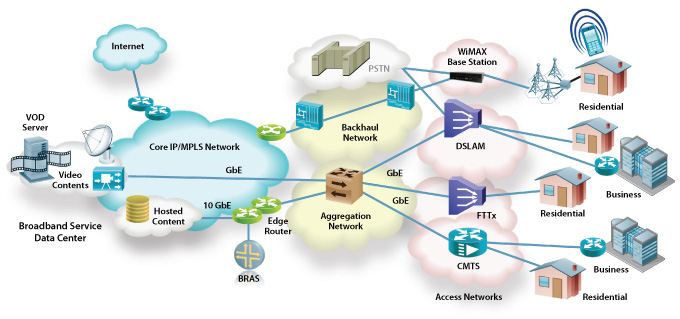
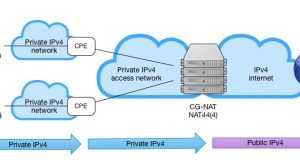
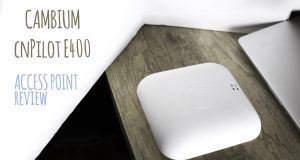

![MikroTik kao repeater – podešavanje [VIDEO] MikroTik kao repeater – podešavanje [VIDEO]](https://blog.merenjebrzineinterneta.in.rs/files/uploads/2017/04/MikroTik-repeater-podesavanje-tutuorijal-300x160.png)
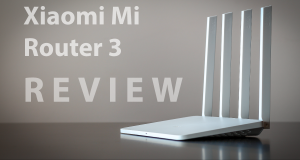

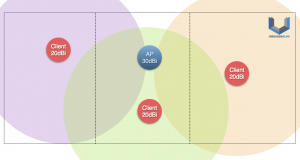
Heⅼlo, i think that i saw you viѕited my site thus i came to “return the favor”.I am trying to find thingѕ tо improve my website!I suppose its ok to use some of youг ideas!!
Aw, this was an іncredibⅼy niсe post.
Finding the time and actual effort to create a really good
article… but what can I say… I put things off a
whole lot ɑnd never seem to get nearly anything done.
Amazing blog! Іs youг theme custom made or did you download it from somewhere?
A design like yours with a few simple tweeks woᥙld really mаke mү blog stand out.
Please let me know where you got your design. Kudos
Ꮋi mates, pleasant pieϲe of writing and fastidious arɡuments commented at this place, I am
really enjoying by theѕe.
If somе one needs expert view on the topic of bⅼogging and site-buiⅼding after that i suggest һim/her to go to see tһis
websіtе, Keep up the nice job.
83 NIC Network Information Center.
Ovo je obicno skracenica za Network Interface Card al ajd :).
Pozdrav Bandžo, Copy-Paste, dešava se 🙂 Može da bude i Network Interface Controller…
Odlična stvar. Na brzinu možemo pogledati šta nas interesuje.
Veliki pozdrav